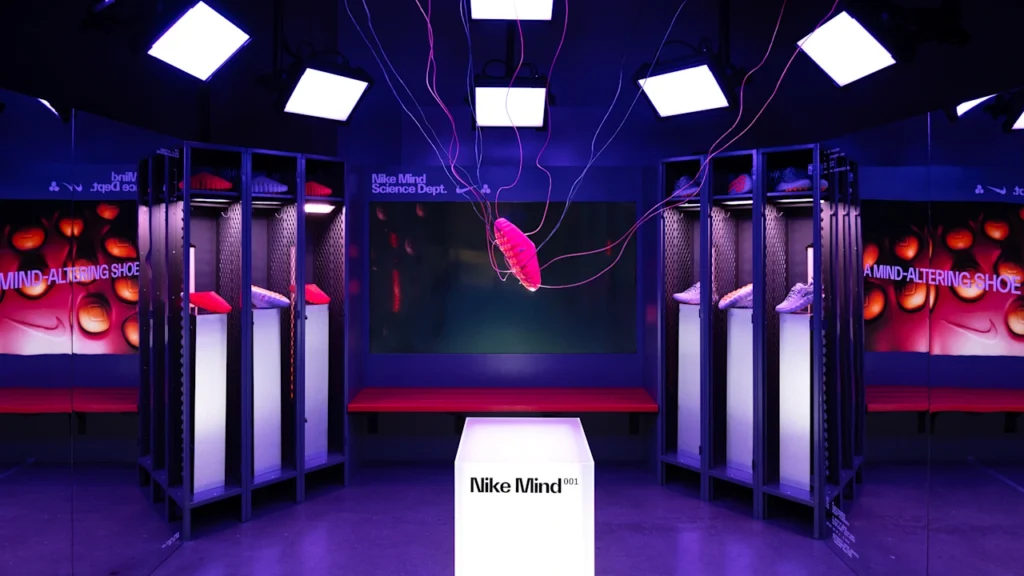
It looks like I’m walking on Nerf darts.
Twenty-two foam nubs protrude from the bottom of this shoe. When I slide it on, it almost feels like I’m walking on bubble tape—or like, with every step, an octopus tentacle is suctioning to my foot.
Even through a thick cotton sock and all that foam, I can feel textures underfoot. I sense the individual blades of grass on a soccer pitch, and dragging my sole along a textured running track feels a bit akin to licking the roof of my mouth.
Am I calmer? Perhaps. I’m certainly more mindful. But I also wonder if I’d notice this sensation in an hour.
This is Nike Mind—the company’s first foray into apparel that puts your brain before your body, hacking your physiology to change your state of mind through applied neuroscience. Available January 2026 in two flavors (a slide called Mind 01 and a sneaker called Mind 02), the new line “was designed to help amplify that dialogue between your brain and your feet,” says Matthew Nurse, chief science officer at Nike.
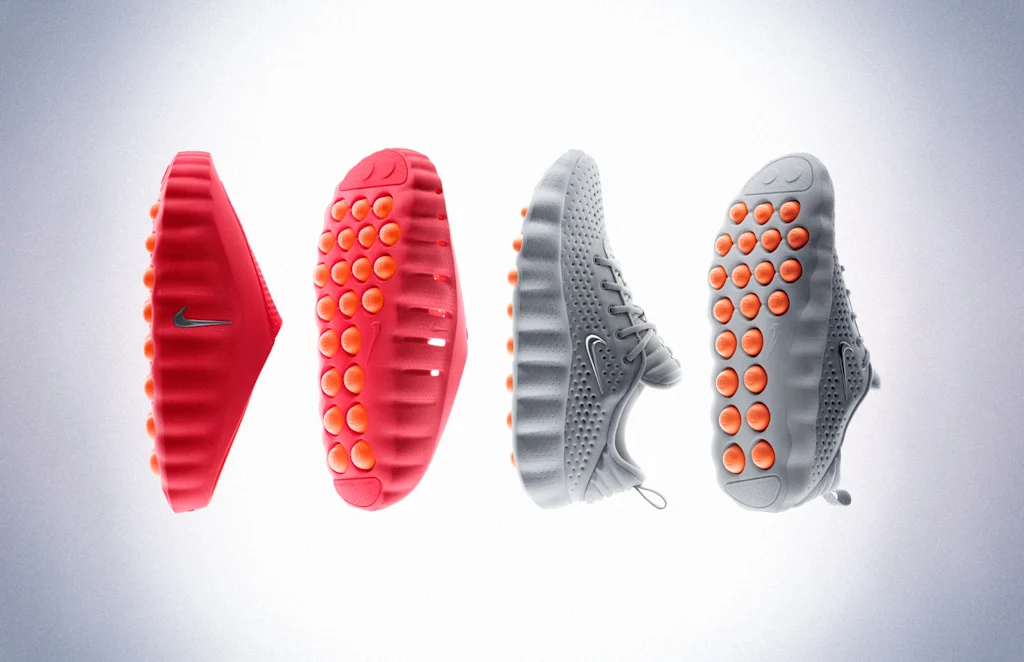
But in fact, the possibilities behind Mind are much larger. For 45 years, Nike has been focused on tools to enhance physical performance. Now it’s considering how the things we wear can measurably change the way we feel.
Using apparel to change how we think
Nurse calls the human body one big “sensory antenna.” Everything around us is stimuli that ultimately affects our brain, and designers are now taking a closer look at how we can apply the past 20 years of neuroscience (in a field often dubbed neuroaesthetics) to their work.
Nike is positioning Mind as a “sensory intervention” in an athlete’s pregame ritual, a way to calm down in the locker room before a big competition. What the designers have really done is create a sort of automated mindfulness that prompts you to get outside your own head and feel the world around you.
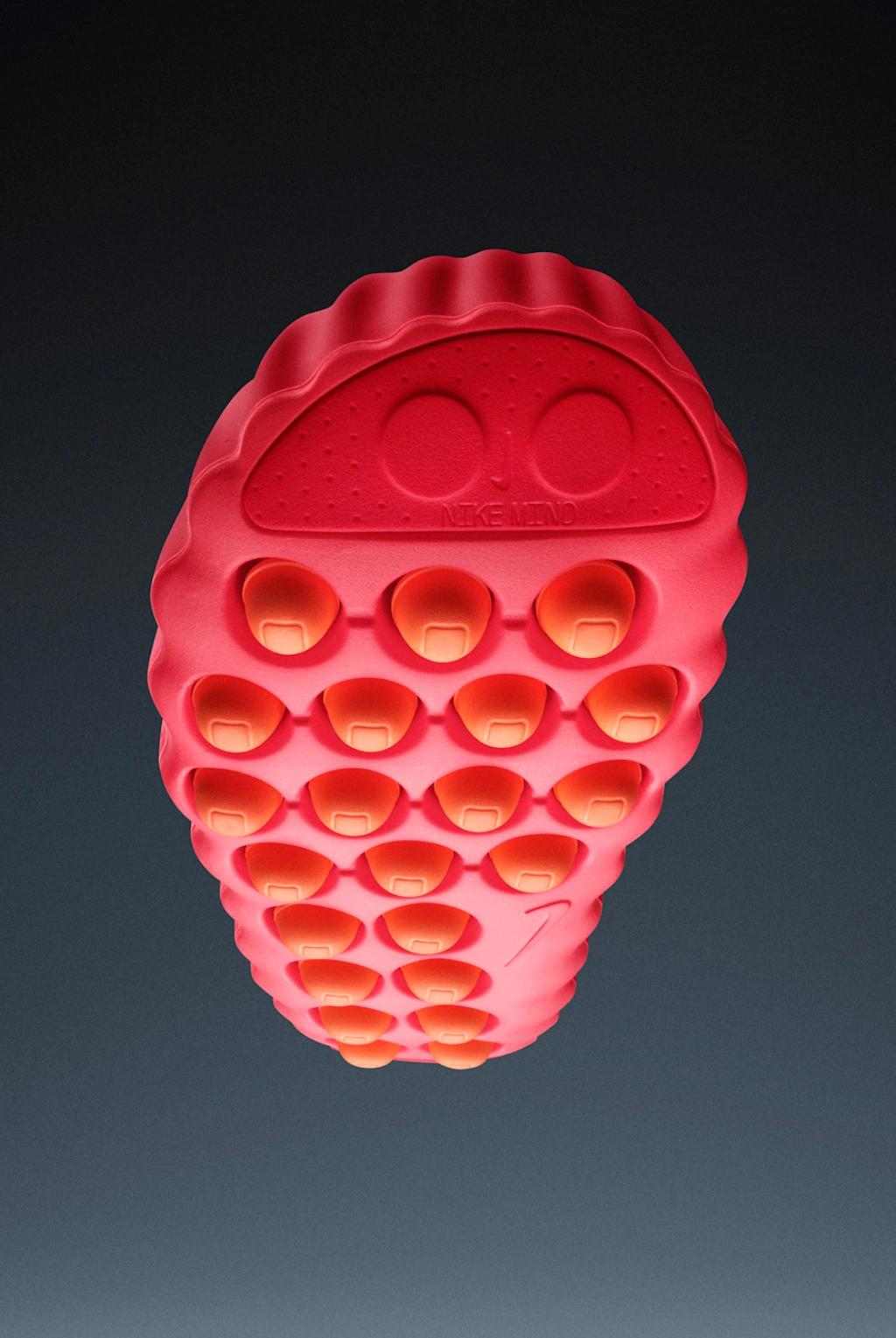
“There’s a unique, specific utility for athletes,” says Nurse. “[But] if you just need some Zen on the way to work, if you just need something on the way home, we’re hoping this is going to work for you, too.”
Seven years ago, the company began building its Mind Science team of neuroscientists that would have the specialization required to bring product to market.
First, the Nike team built a prototype: a sock with 40 pressure points pushing right into your foot. Why 40? The team felt that figure represented the ceiling of what your foot could perceive. It was a good proof of concept, but it wasn’t really a shoe. So they kept iterating.
The effort that went into the nodes themselves is extraordinary. Nike used computer modeling to iterate and simulate different geometries that it then tested IRL with athletes and EEGs. The work sounds almost silly until you poke at one of these nodes with your finger and realize it’s not just a piston that runs up and down. It actually captures different angles, more like a video game controller’s thumbstick. That’s what gives the sensation so much fidelity.
When Nike brought that Mind prototype to its manufacturers in Korea, they found their original design would take 41 steps (including gluing each node by hand) to turn into a shoe—too many steps for reasonable mass production. Over time, the team simplified the shoe to 22 nodes, and reconfigured the whole design so it could be produced in just two steps.
Seeing the Mind deconstructed reveals all of its industrial design efficiencies. The midsole looks like a chunk of foam honeycomb. Into it slip the nodes, which Nike figured out how to produce in just two molded pieces (it looks a lot like one of those reusable bubble tape fidgets that were so popular with the kids a few years ago).
The project also required Nike to reimagine the strobe—a thin fabric layer in the insole that helps make the shoe feel flexible. The problem, Nike found, was that it also absorbs the sensations of the ground (and one designer pointed out that this is even true for barefoot shoes like Vibram). So the team created a new, elastic version that wouldn’t dampen sensation.
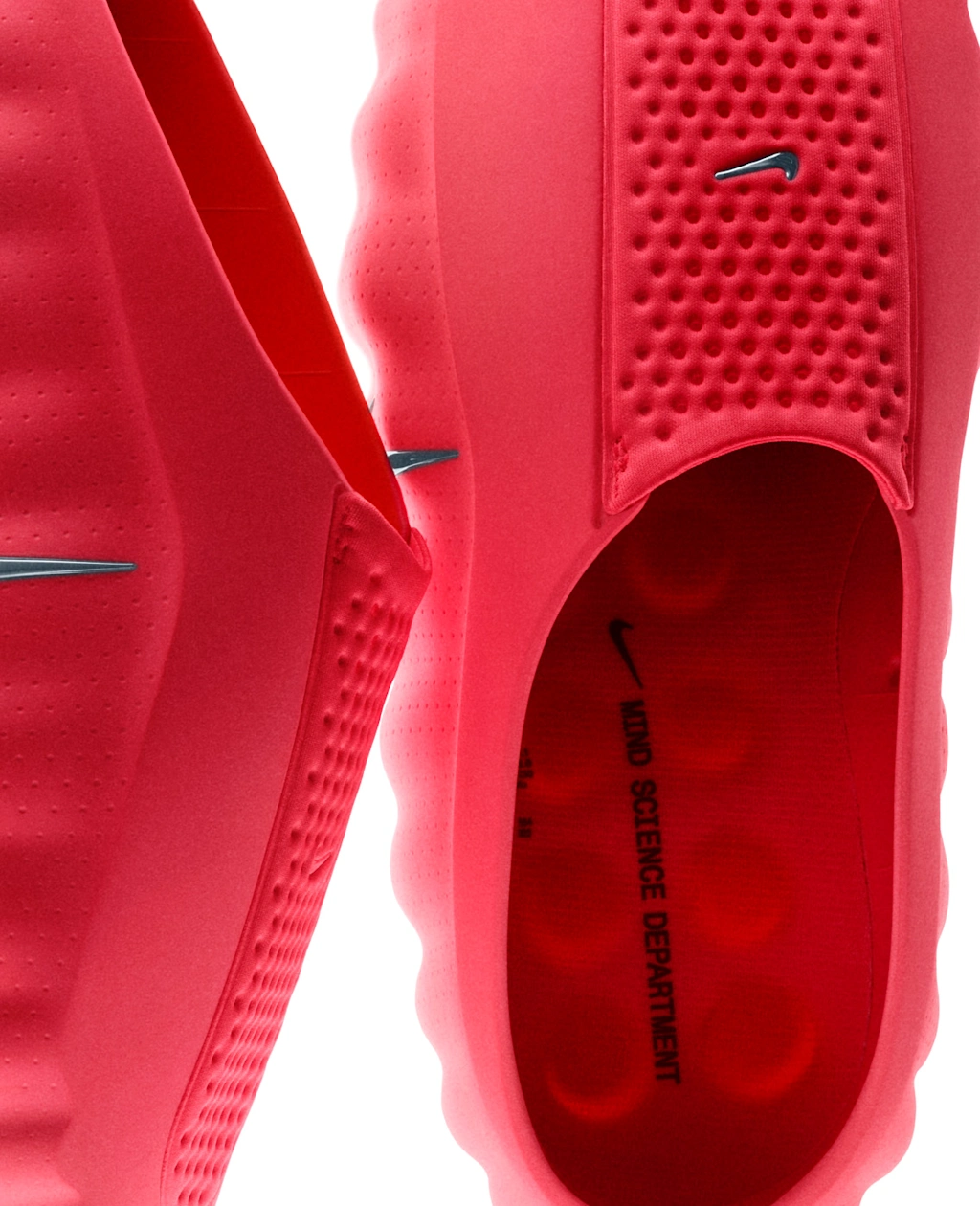
The shoes have now been tested on 2,000 athletes, doctors, nurses, and physical therapists for more than 100,000 hours on the job and in Nike’s own research lab. In many cases, people were connected to EEGs to measure their brain patterns. Nike confirmed that the Mind boosts activity in the somatosensory cortex (which processes touch) and increases in alpha wave frequencies (the same signals in your brain that increase during meditation).
When I ask Nurse how much of a boost they see in alpha waves—and if the shoe reaches levels akin to meditation—he says it would still be too much to call the shoes “meditation light.” When I ask if the effects might wear off over time, as people are more habituated to the footwear, he agrees that’s possible, but notes the shoes don’t disappear from your senses like a pair of glasses on your face. Because those nodes have been designed to constantly fire as you shift, on and off.
“What we hear from people is, if you’re standing a while, maybe you stop paying attention for a little bit, but then [you move and] suddenly you’re aware,” says Nurse. “We also hear that even while people are sitting, they notice they’re just probing more. . . . You’re almost searching and exploring that feedback, because it’s new and novel.”
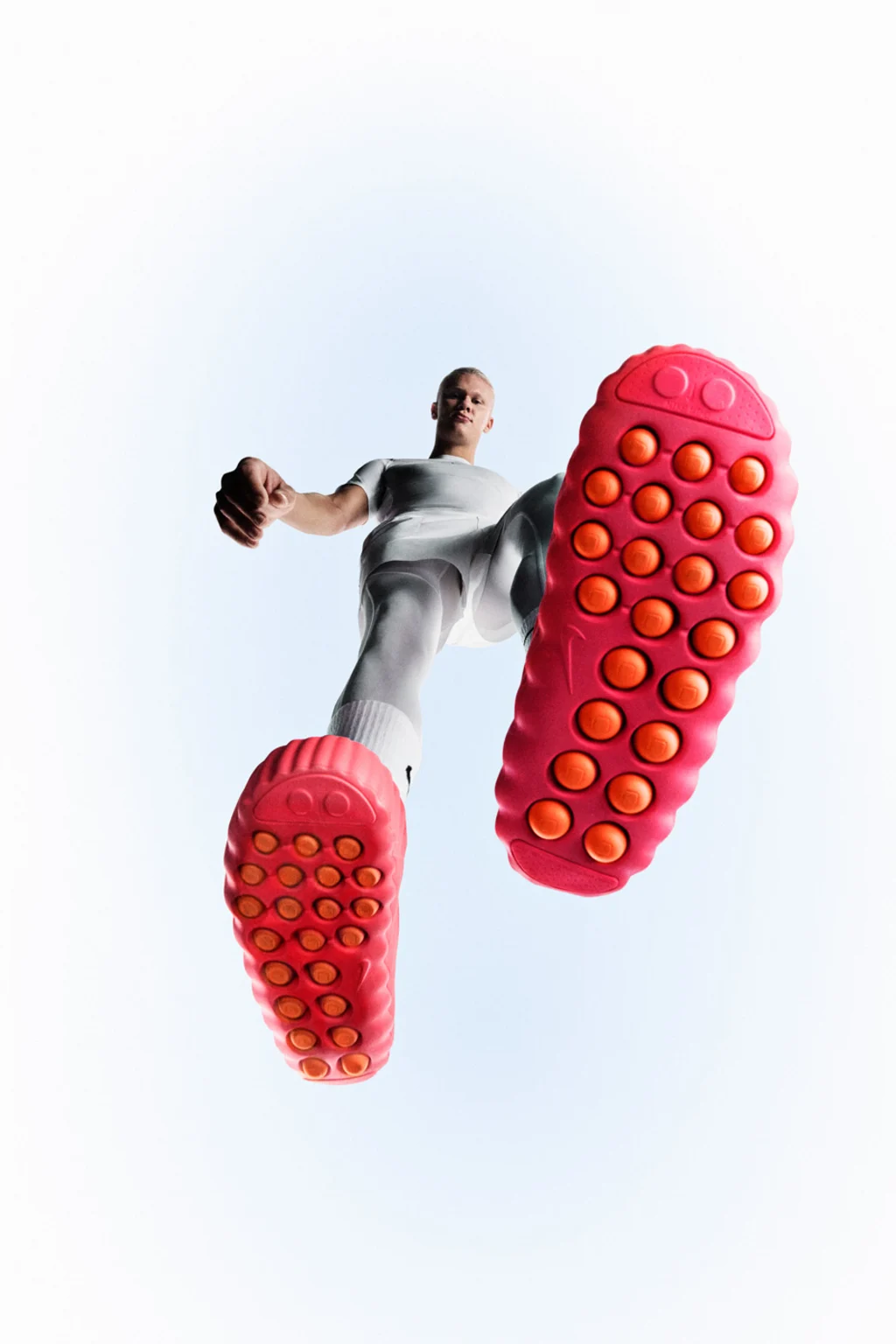
The future of Nike Mind
Mind is a fascinating product. I found the slides, which I tried in an imperfect size, to be subtle enough that I almost didn’t notice. But the full sneaker felt far more activating, and I would be tempted to try them without a sock. What’s certain is that these are early days for this field, and even Nurse admits that Nike’s first Mind products are just a hint of what’s possible.
Nurse calls Mind 01 and 02 “chapter one of the feet.” He notes that Nike has “other chapters we’re interested in [beyond] the feet,” with a most definite emphasis of what’s possible across our skin. As for the experience of calm, it’s simply one sensation Nike designers are after, knowing that in different parts of your day, the goal is not always to be full Zen.
“You can imagine where we’re headed,” Nurse says. “You start thinking about tapping into [all sorts of] sensory systems. . . . You’ve got a whole body.”
